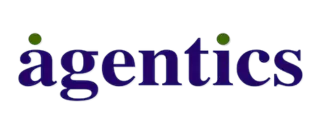
Voice Agent: Definition, Evolution, and Key Characteristics
Voice AI InnovationsOverview
The article delineates the concept of voice agents, tracing their evolution and pinpointing their essential characteristics and impact on business communication. Voice agents represent cutting-edge AI technologies that harness Automatic Speech Recognition, Natural Language Processing, and Text-to-Speech to enable seamless human-machine interactions. This innovation significantly enhances customer support and operational efficiency across diverse sectors.
Furthermore, the article examines their historical development and technological advancements, alongside the measurable benefits they confer to organisations, such as increased customer satisfaction and reduced response times. This compelling evidence underscores the transformative potential of voice agents in modern business landscapes.
Introduction
The rise of voice agents signifies a pivotal moment in the evolution of artificial intelligence, fundamentally reshaping human interaction with technology. These sophisticated systems, driven by advanced speech recognition and natural language processing, not only streamline communication but also enhance user experiences across diverse sectors.
As organisations increasingly depend on voice agents to elevate efficiency and customer satisfaction, they must adeptly navigate the challenges of accuracy and privacy that accompany this technological advancement.
What does the future hold for voice agents? How can businesses harness their potential while effectively addressing these critical concerns?
Define Voice Agents: Core Concepts and Functionality
A voice agent represents a significant advancement in AI-driven technology, leveraging Automatic Speech Recognition (ASR), Natural Language Processing (NLP), and Text-to-Speech (TTS) to comprehend and respond to human speech. These systems, such as a voice agent, facilitate seamless interactions between users and machines, performing a wide range of tasks—from addressing inquiries and providing information to executing commands and managing workflows. By emulating human conversation, voice agents enhance user experience and streamline communication across various platforms, including customer support, sales, and internal business operations.
In the realm of customer support, for instance, voice agents effectively handle routine inquiries, allowing human staff to focus on more complex issues, thereby boosting overall efficiency. The integration of ASR enables these systems to accurately grasp spoken language, while NLP empowers them to interpret context and intent, ensuring relevant and timely responses. Furthermore, TTS technology transforms text responses into natural-sounding speech, fostering a more engaging interaction. As a result, organisations that implement a voice agent often witness increased customer satisfaction and reduced response times, solidifying their position as an essential asset in modern communication strategies.
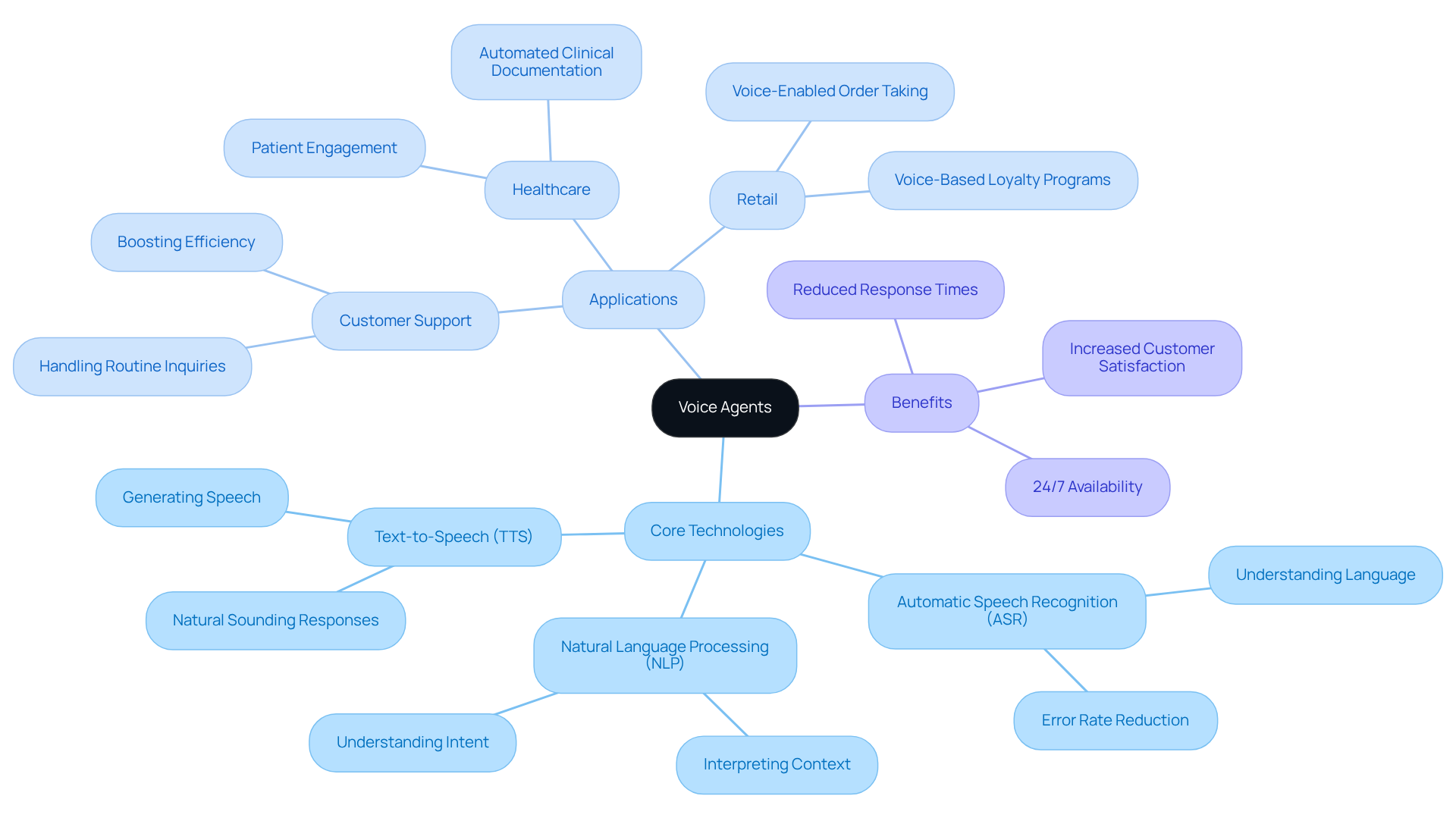
Trace the Evolution of Voice Agents: From Concept to Implementation
The development of voice agents can be traced back to early speech recognition systems created in the 1950s and 1960s. Initial technologies, such as Bell Laboratories’ Audrey, were limited to recognising a small set of commands, primarily numbers. However, the introduction of the Hidden Markov Model in the 1980s marked a significant advancement, allowing for statistical analysis of speech patterns and significantly enhancing recognition capabilities.
The 21st century represents a pivotal turning point, driven by remarkable advancements in machine learning and artificial intelligence. The emergence of deep learning algorithms in the 2010s transformed virtual assistants, enabling them to comprehend natural language and context more efficiently. This shift led to the rise of sophisticated virtual assistants, or voice agents, such as Amazon’s Alexa and Apple’s Siri, which have become integral to everyday life.
Today, voice agents are not only prevalent in consumer applications but also play a crucial role in specialised business solutions. Leading firms like Agentics are at the forefront of this revolution, offering customised AI solutions that enhance customer interactions and operational efficiency. Various sectors are progressively embracing audio solutions with a voice agent to improve workflows and elevate service provision. Notably, the worldwide speech and sound recognition market is projected to reach USD 83.0 billion by 2032, underscoring the increasing reliance on these advancements across diverse sectors. Furthermore, the adoption rate of speech technology in customer support stands at an impressive 81%, highlighting its practical implications for enhancing service delivery. Nevertheless, challenges such as accuracy and privacy concerns remain critical factors in the ongoing development of voice agents.
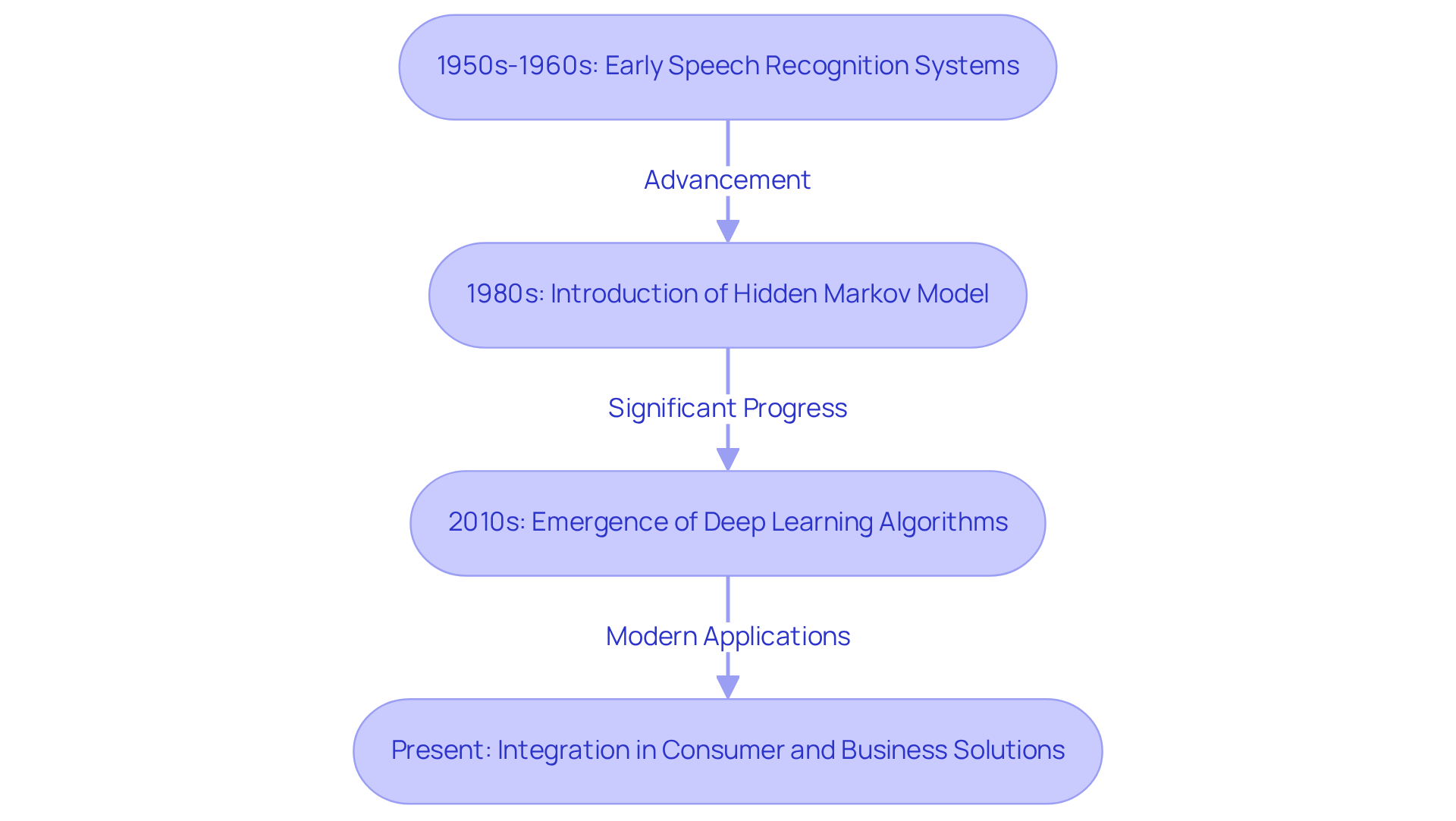
Identify Key Characteristics of Voice Agents: Technology and Applications
Voice agents are at the forefront of technological innovation, characterised by their sophisticated capabilities in processing natural language, recognising speech patterns, and generating human-like responses. These advanced voice agents utilise methods such as:
- Natural Language Processing (NLP)
- Automatic Speech Recognition (ASR)
- Text-to-Speech (TTS)
to facilitate seamless interactions. Notably, ‘Agentics’ customised auditory AI solutions exemplify this innovation, enabling the implementation of voice agent technology across various applications, including:
- service chatbots
- virtual sales assistants
- automated call handling systems
This flexibility empowers companies to tailor their voice agents to specific operational needs, significantly enhancing client interaction and boosting overall effectiveness.
As the global speech recognition technology market is projected to approach nearly 50 billion U.S. dollars by 2029, the demand for effective auditory solutions continues to expand. This trend underscores the importance of incorporating these technologies into business strategies. Industry leaders emphasise that the development of voice agents transcends mere automation; it is about fostering meaningful interactions that resonate with users, ultimately reshaping client experiences across sectors. Agentics stands at the forefront of this evolution, delivering innovative solutions that utilise a voice agent to enhance business communication and efficiency. Embrace the future of client engagement by integrating advanced voice agent technology into your operations today.
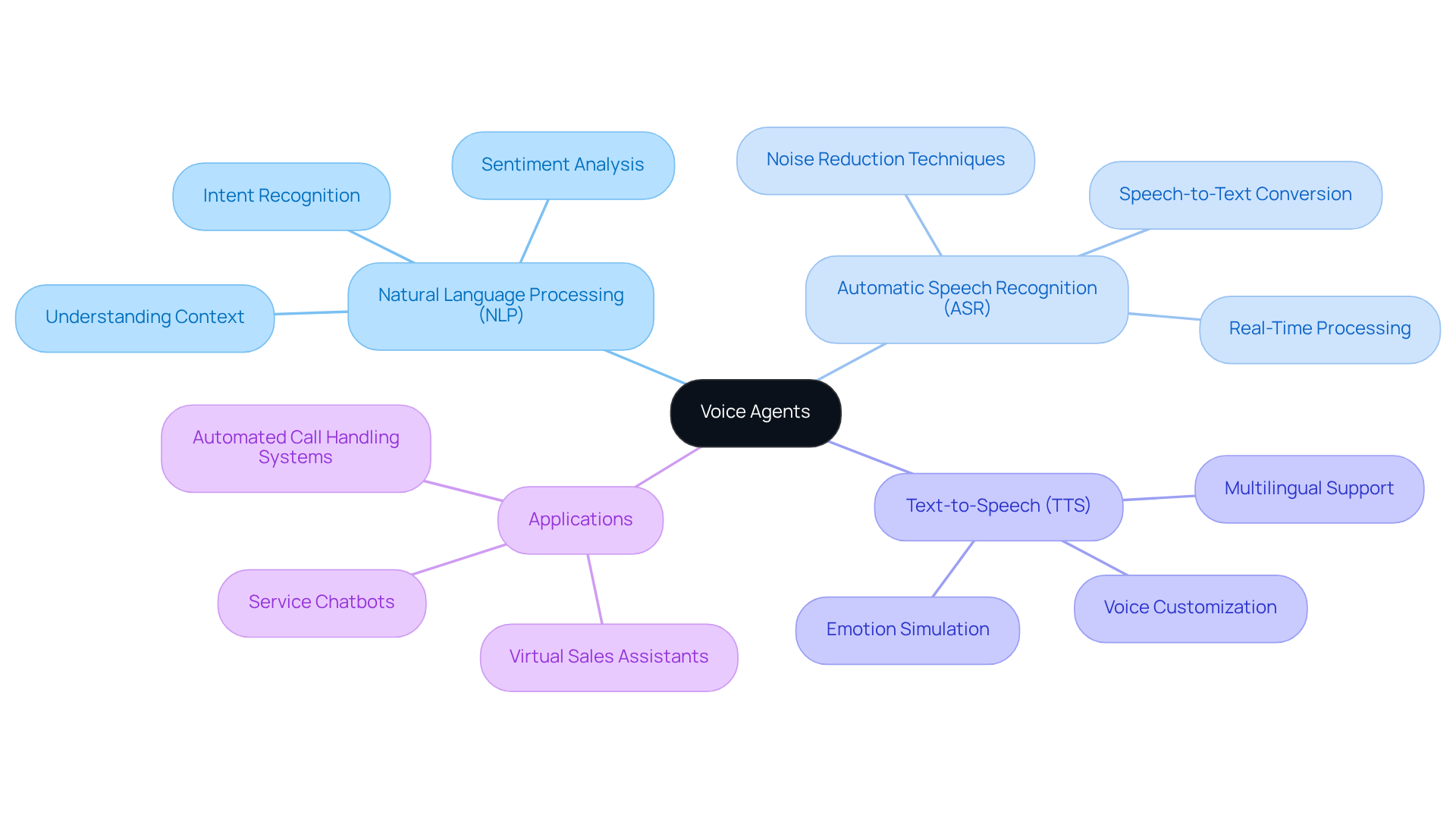
Examine the Impact of Voice Agents on Business Communication and Efficiency
Voice agents have significantly transformed business communication by automating routine tasks, reducing response times, and enhancing client interactions. Organisations utilising digital assistants for customer support have reported increased satisfaction levels due to quicker and more accurate responses. Moreover, these voice agents can manage large volumes of inquiries simultaneously, allowing human agents to focus on more complex issues. This shift not only enhances operational efficiency but also results in cost savings and improved resource allocation within organisations. As businesses increasingly adopt voice agents, the potential for improved communication and heightened productivity becomes unmistakably clear.
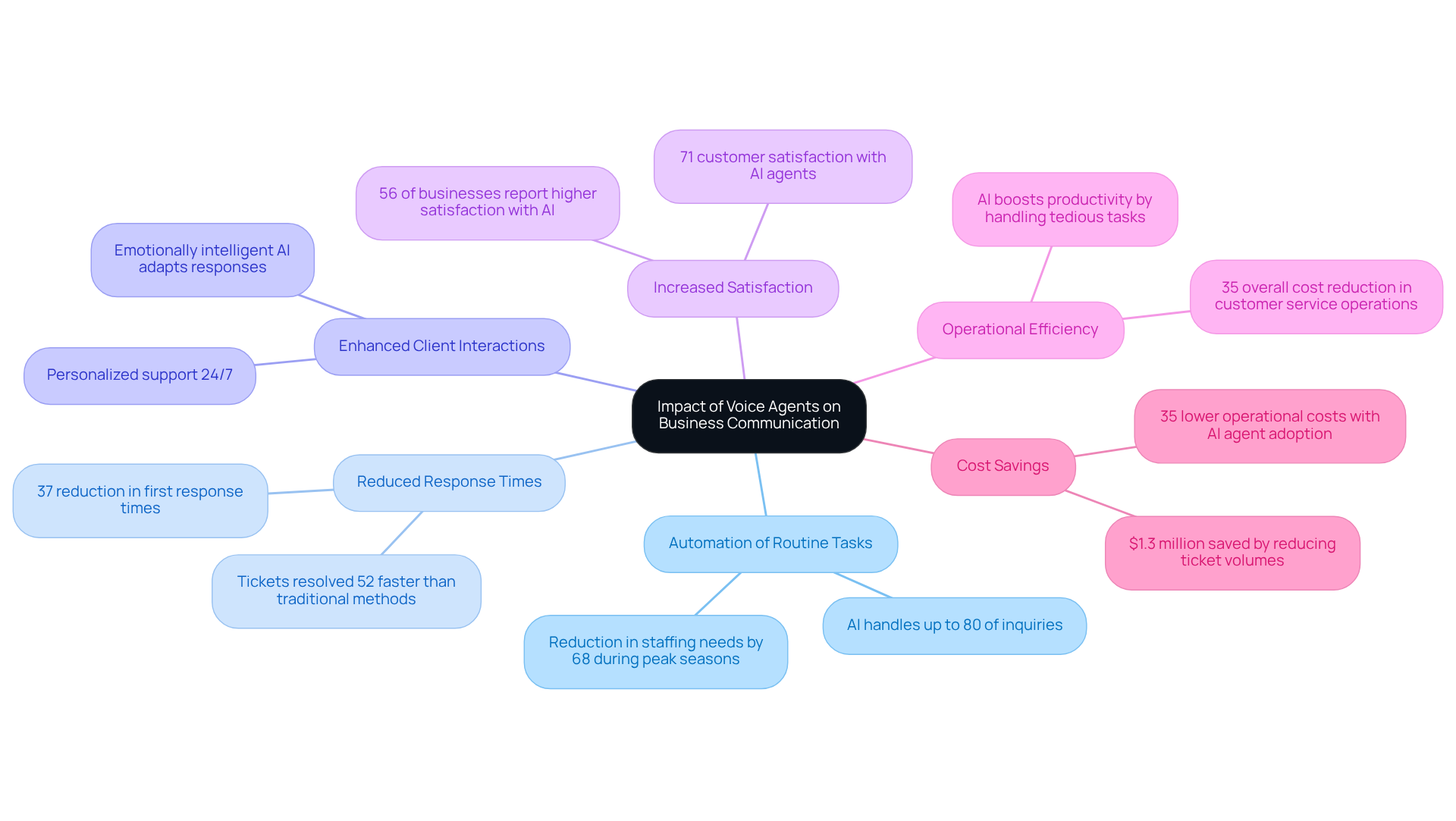
Conclusion
Voice agents signify a groundbreaking leap in artificial intelligence, seamlessly merging advanced technologies such as Automatic Speech Recognition, Natural Language Processing, and Text-to-Speech to create systems capable of understanding and responding to human speech. These innovations facilitate smoother interactions between users and machines, significantly enhancing communication and driving efficiency across various sectors, particularly in customer support and business operations.
This article traces the evolution of voice agents from their rudimentary beginnings to the sophisticated systems in use today. Key advancements, including the introduction of deep learning algorithms, have empowered these agents to interpret natural language and context with remarkable effectiveness. The growing importance of voice agents in business is underscored, showcasing their ability to manage inquiries, improve customer satisfaction, and streamline processes—ultimately leading to substantial operational efficiencies and cost savings.
As the demand for voice technology continues to surge, organisations must embrace these advancements to enhance client engagement and operational effectiveness. The integration of voice agents into business strategies is not merely a trend; it represents a fundamental shift towards more meaningful interactions that can redefine customer experiences and drive success in an increasingly competitive landscape. The time to act is now—leverage voice technology to transform your business and stay ahead of the competition.
Frequently Asked Questions
What is a voice agent?
A voice agent is an AI-driven technology that utilises Automatic Speech Recognition (ASR), Natural Language Processing (NLP), and Text-to-Speech (TTS) to understand and respond to human speech, facilitating interactions between users and machines.
What technologies do voice agents rely on?
Voice agents rely on Automatic Speech Recognition (ASR) for understanding spoken language, Natural Language Processing (NLP) for interpreting context and intent, and Text-to-Speech (TTS) for converting text responses into natural-sounding speech.
How do voice agents improve user experience?
By emulating human conversation, voice agents enhance user experience and streamline communication across platforms, making interactions more seamless and efficient.
In what areas are voice agents commonly used?
Voice agents are commonly used in customer support, sales, and internal business operations to handle inquiries, provide information, execute commands, and manage workflows.
What benefits do organisations experience by implementing voice agents?
Organisations that implement voice agents often see increased customer satisfaction, reduced response times, and improved efficiency as human staff can focus on more complex issues.
Enjoyed this post? Share it with your network!
10 Best AI Sales Tools to Boost Your Team’s Performance

Discover the top 10 best AI sales tools to enhance team performance and drive revenue growth.
Mastering Test Call Numbers: A Step-by-Step Guide for Sales Directors

Elevate your communication with our guide on mastering test call numbers for sales success.
7 Ways Automated Outbound Calls Boost Sales Performance

Discover how automated outbound calls enhance sales performance and streamline communication.
